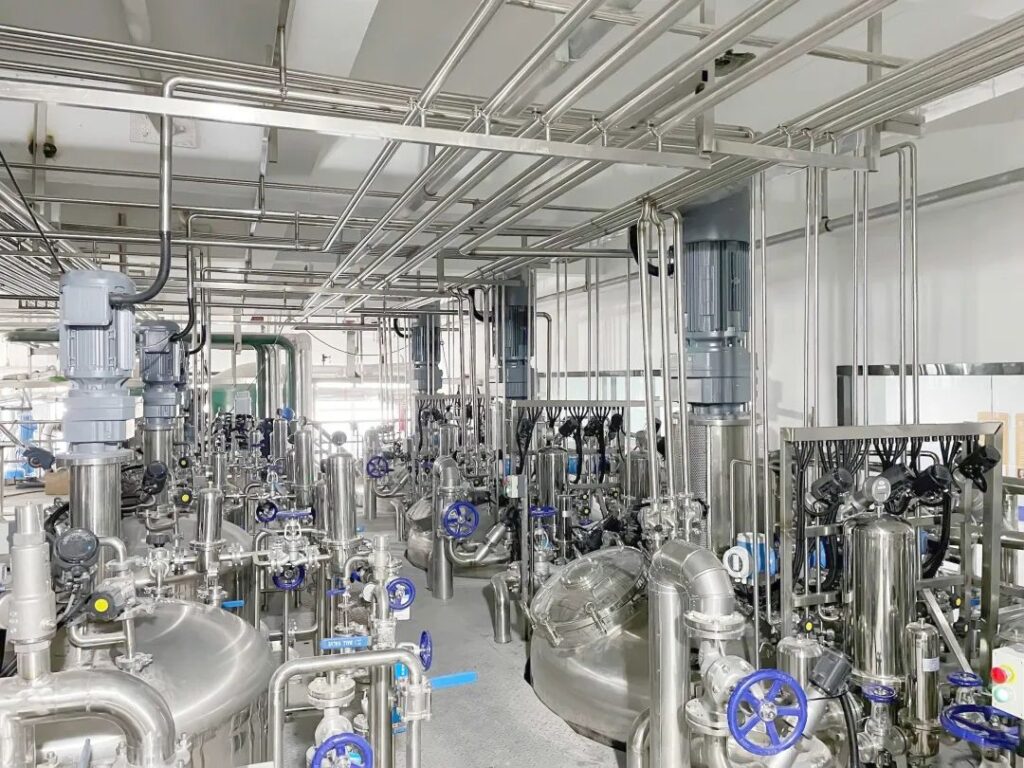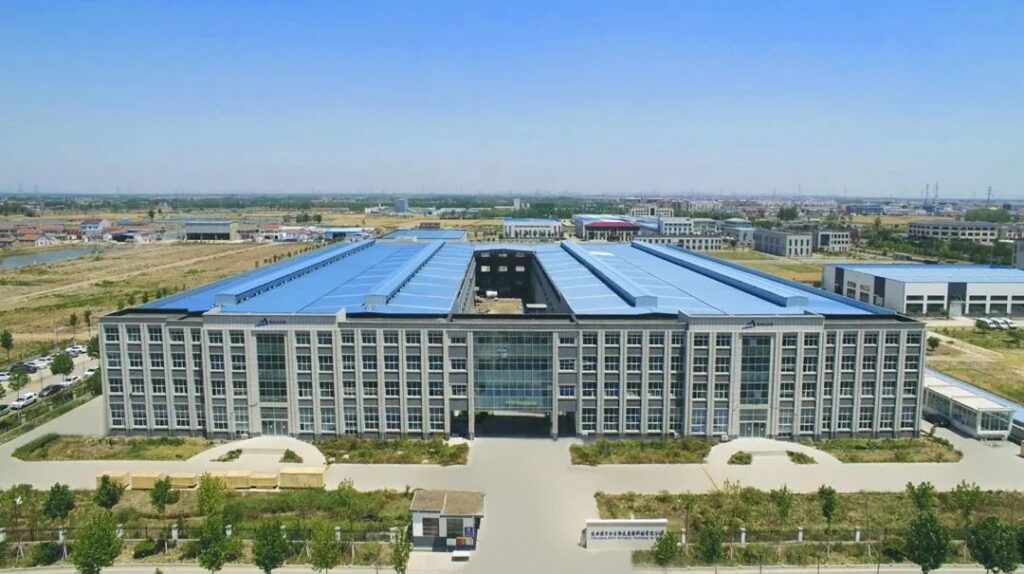Lysozyme, also known as muramasin, is an N-acetaminohydrolase, which mainly acts on the polysaccharide backbone of the cell wall peptide glycan (PG) of Gram-positive bacteria The β-1,4 glycosidic bond between N-acetylglucosamine (NAG) and N-acetylcarbamate (NAM) can lead to the rupture and death of Gram-positive bacteria. Lysozyme is also considered an antibiotic substitute due to its ability to destroy bacterial cell walls. Among them, egg white lysozyme is more favored in the market due to its wide range of sources. However, compared with it, human microbial enzyme (hLYZ) has unique advantages in antibacterial, antiviral, antifungal, anti-inflammatory, anticancer and immunomodulatory activities, so it has great potential in clinical and food applications.
1.Expression of human lysozyme
hLYZ is mainly found in body fluids, cells, tissues and organs. Type C lysozyme is produced in body fluids and blood cells, such as milk, saliva, tears, nasal mucus, sweat, urine, serum and various tissue fluids, blood cells such as neutrophils, macrophages, monocytes and hematopoietic cells in bone marrow, G type lysozyme is divided into two categories, mainly distributed in tissues and organs, hLYZg1 is often expressed in the kidneys, and hLYZg2 is mainly expressed in the eyes and testes.
● Milk
Milk is an important source of mammalian lysozyme, which belongs to type C lysozyme, and its structure, physicochemical properties and concentration vary greatly among different species. Most mammalian milk contains lysozyme, and the level of lysozyme in the milk of ruminants such as cows and goats is low, and only exists in trace amounts in cow’s milk, about 0.05−0.22 mg/L, but the lysozyme content in the milk of mammals such as humans, horses, dogs and donkeys is relatively high, and the lysozyme content in breast milk is about 200−390 mg/L. In addition, the content of lysozyme in donkey milk is also at a high level, and its nutritional structure is highly similar to that of breast milk, and it also has the potential to become a substitute for breast milk. The presence of lysozyme in breast milk plays a positive role in improving infant immunity and preventing infections, increasing the level of beneficial intestinal flora and enhancing the baby’s ability to resist disease, and these effects are produced by breastfeeding the infant and lysing certain potentially harmful gram-positive bacteria and a few gram-negative bacteria in the infant’s gastrointestinal tract.
● Tears
Recently, it has been shown that lysozyme exists in retinal pigment epithelium (RPE) cells, and it has been demonstrated that lysozyme plays a positive role in RPE immune response. A 650 study used the antimicrobial proteins lactoferrin and lysozyme in tears as biomarkers to study the body’s immune status, revealing that lysozyme in tears also has immunomodulatory properties. Recent studies have also found that the cornea, as a potential target tissue for SARS-CoV type 7420, has a beneficial role in blocking the entry of the virus into the body through the cornea.
● Gastrointestinal tract
Paneth cells and individual immune cells in the gastrointestinal tract produce lysozyme, which secretes lysozyme into the intestinal lumen, which is the main source of lysozyme in the intestine that is in direct contact with the intestinal flora, and immune cells in the intestine such as macrophages and neutrophils also produce lysozyme for immune regulation in the intestine. Studies have found that in low-inflammatory diseases, lysozyme secretion can improve barrier function, but in experimental colitis and immunocompromised individuals, where more severe intestinal inflammation occurs, lysozyme secretion plays a counterproductive role. In 2020, it was found that the ectopic expression of lysozyme secreted by Paneth cells in the colon reduced lysozyme-sensitive bacteria in the colon, thereby aggravating colitis, while goblet cells in the intestine of lysozyme-deficient mice proliferated abnormally, thereby alleviating intestinal inflammation, revealing that Paneth cell lysozyme can balance the anti-inflammatory and pro-inflammatory responses in the gut. In 2021, when conducting a study on the action of alkalisophila-derived lysozyme on the intestine, researchers found that lysozyme will dose-dependently down-regulate the level of intestinal inflammation, and there are stark differences between the two experimental results, but the specific reason is whether the source of lysozyme is different or the composition of the intestinal microbiota is different between individuals, which needs further research.
2.Human lysozyme biological functions
● Antiviral effect
The antiviral mechanism of lysozyme mainly depends on the cationic properties of lysozyme, which as an alkaline protein, will carry a large amount of positive charge, directly interact with the negatively charged virus, and form a double salt with the DNA, RNA and apoprotein of the virus to inactivate the virus. At the same time, lysozyme can kill viruses by regulating lymphocytes and macrophages-mediated cytotoxicity in the body.
● Antimicrobial effect
From the initial surprise of the new crown epidemic to the united efforts of the whole people to fight the epidemic, the antibacterial effect of lysozyme is mainly divided into two types, namely the lysis mechanism and the non-lysis mechanism. The cleavage mechanism mainly relies on the activity of enzymes, through the hydrolysis of the β-1,4 glycosidic bonds in peptidoglycan, which breaks the peptidoglycan layer and reduces the mechanical strength of the bacterial cell wall, resulting in cell death. However, this bacteriolytic mechanism only works when the 2 disulfide bonds in lysozyme remain intact, but it is also this mechanism that enables lysozyme to act as a non-specific innate immune molecule to resist the invasion of bacterial pathogens. The non-cleavage mechanism of lysozyme depends on its structural factors, cationic properties, and hydrophobic groups. Partially or completely denatured lysozyme that lacks enzymatic activity has been found to be able to fight both gram-positive and gram-negative bacteria. Lysozyme has an antimicrobial peptide motif within the N-terminal domain, and its N-terminal helix can cross the outer membrane of the bacteria and interfere with membrane potential-dependent respiration to kill gram-negative bacteria. In addition to this, type C lysozyme carries a large amount of positive charge and can be inserted into the pores of the negatively charged cell membrane, causing bacteria to lyse and die. It is precisely because of the strong antibacterial activity of lysozyme that pathogenic bacteria have developed three rescue mechanisms against lysozyme in the process of evolution: peptidoglycan (PG) modification, changing the charge and integrity of bacterial cell membranes, and expressing lysozyme bacterial inhibitors to overcome difficulties together.
● Anti-tumor effect
The study also found that the expression of high mobility group protein B1 (HMGB1) in tumor cells is high, which will promote tumor cell migration, and advanced glycation end product receptor (RAGE) is related to cell adhesion and aggregation, which can bind to HMGB1 and is one of the important targets for tumor treatment. However, hLYZ can achieve anti-tumor effect by reducing the expression of HMGB1 and inhibiting the HMGB1-RAGE pathway. In addition, hLYZ can also directly act on most tumor cells and even goose lymphoma in the body, reducing the density of tumor cells and prolonging the survival time of the body.
● Anti-inflammatory effect
Lysozyme has a dual role in inflammation, its mediated bacterial degradation activity contributes to the activation of phagocytic cells, enhances the release of bacterial products and the production of inflammatory mediators, but at the same time lysozyme also helps to alleviate inflammation. The bacterial degradation reaction mainly relies on hLYZ cleaving bacteria in epithelial cells and resident macrophages to release related pathogenic molecular patterns (PAMPs), which help recruit more phagocytic cell internalized bacteria to form phagosomes to further degrade bacteria, and PAMP can also activate inflammasomes, thereby promoting the secretion of more pro-inflammatory cytokines. Inflammasomes are mainly composed of pattern recognition receptors (PRRs), apoptosis-associated spot-like proteins, and cysteine proteases. The PRRs involved in lysozyme-mediated degradation reactions include NOD-like receptors (NLRs) such as NOD1, NOD2 receptors and Toll-like receptors (TLRs), which are stimulated by PAMP to be activated, bind to apoptosis-related mottle-like proteins, and then bind to cysteine proteases to form inflammasomes-induced inflammatory responses. In addition, the body’s complement system also promotes an inflammatory response, complement proteins are activated and cleaved, some of which are deposited on PAMP and monomeric PG, and others form anaphylatoxins such as C5a and C3a, which act as chemokines for phagocytic cells and recruit more phagocytes to cause an inflammatory response.
● Immunomodulatory effect of the body
Lysozyme is an important non-specific immune factor in the human body, which can participate in a variety of immune responses and play an important role in the normal defense and non-specific immunity of the human body. It has been found that lysozyme can significantly increase the content of immunoglobulins such as immunoglobulin A and immunoglobulin M in animals, and the cytokines interleukin-1β and interferon-γ produced by it can induce helper T cell immune responses in the body and promote cellular immunity. Secondly, lysozyme in the human body can also strengthen the resistance of serum sterilized proteins, γ-globulin and other defense factors in the body to infection. In addition, there are studies that show that lysozyme can improve and enhance the phagocytosis and digestion ability of macrophages, activate the phagocytic function of white blood cells, and improve the leukopenia caused by cytostats, thereby enhancing the body’s immunity.
About BaiLun Biotechnology Co., Ltd:
BaiLun Biotechnology Co., Ltd. stands as a leading supplier and premier technical service provider, specializing in the provision of comprehensive bioreactor systems and advanced control solutions. Our extensive product line encompasses a wide array of offerings, ranging from bioreactors (fermenters) to animal cell bioreactors, biological shakers, and control systems tailored for bioprocessing applications. With a capacity spanning from 0.1L to 1000KL, we are committed to fostering the growth of China’s bioreactor industry on a global scale.
At BaiLun, we boast a seasoned team of engineers equipped with profound expertise in fermentation processes, biochemical equipment, and chemical technology. Moreover, we actively engage nationally renowned experts and scholars as technical consultants, ensuring the robust technological underpinnings of our products. Central to our ethos is a relentless pursuit of product innovation and technological leadership, all geared towards guaranteeing utmost customer satisfaction. We hold ourselves accountable to prioritize customer benefits, embodying this commitment as the cornerstone of Bailun Company’s core values.
Our diverse product portfolio is meticulously crafted to cater to the multifaceted demands of our clientele. From inception, we have upheld the principles of quality paramountcy, customer-centricity, and integrity-driven operations. It is our unwavering dedication to meeting the evolving needs of our customers that propels us forward. Embracing the tide of economic globalization, we extend a genuine invitation to collaborate with enterprises worldwide, aiming for mutual prosperity and success.
The spirit of BaiLun encapsulates a dedication to customer-centricity, a pursuit of excellence in quality, a commitment to fairness and integrity, and an unwavering drive for continuous improvement and innovation.
Contact Us:
Add:6848# Liuxiang Rd., Jiading, Shanghai, China
Contact Person: Maddie
Email:[email protected]
Phone:+86-134-7276-8163 (WhatsApp)
Website: https://fermentorchina.com/



